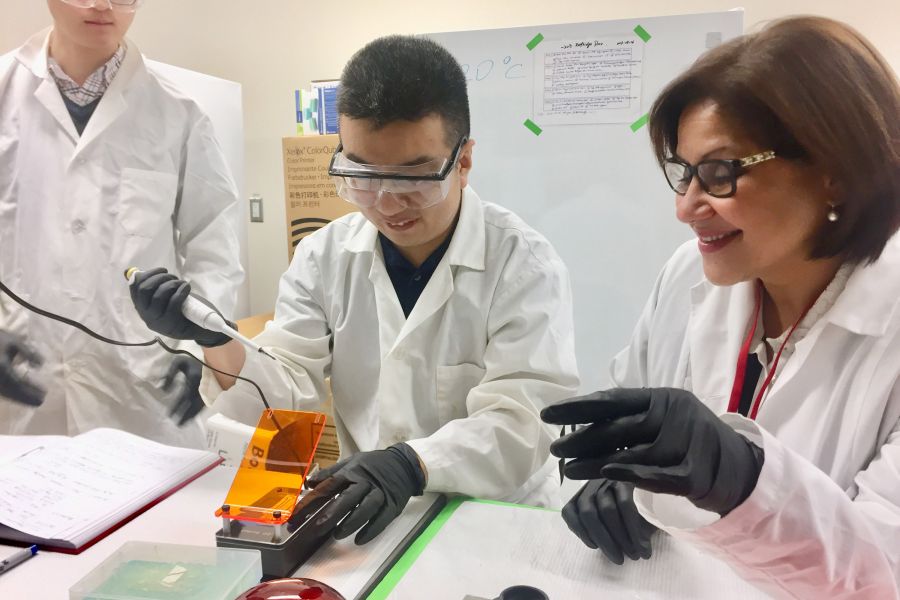Two Brock University scientists, a chemist and an expert on parasites, have produced and tested what Brock is calling a “groundbreaking” device that can detect diseases from DNA samples at a fraction of the cost of traditional methods.
The device, known as the quantitative paper-based DNA reader, is a small-scale version of a normally expensive and complicated DNA laboratory technique known as polymerase chain reaction (PCR), which typically requires highly specialized equipment and costly molecular probes.
The new technology, invented by Brock’s assistant professor of chemistry Feng Li, is “fast, inexpensive and accurate, making it ideal for use in developing countries,” said a Brock news release.
The device comes with a price tag of around 10 cents, consisting of a strip of paper attached onto a glass slide and
In use, a DNA samples are loaded onto markings reminiscent of tiny thermometers and react with low-cost chemicals that causes up the lines to rise, similar to the way mercury rises in a thermometer.
“Different concentrations of the genetic disease biomarkers in the samples would migrate different distances,” said Li.
“All you need to do is read the distance they penetrate, just like you’d read a ruler.”
Li said the device will be extremely useful in resource-limited settings where there aren't a lot of facilities to interpret DNA results.
The device has received extremely positive feedback after testing.
Ana Sanchez, a Brock health sciences professor who runs a research program focusing on parasites at the National Autonomous University of Honduras, has used the device to test children for helminth infection — a disease which affects about 1.5 billion people worldwide and is a major cause of childhood malnutrition and physical impairment.
“The results are beautiful,” said Sanchez. “There’s no doubt that the system works.”
She said the device is both fast and sensitive, far beyond basic traditional techniques which rely on the expertise of the person observing the sample.
Because the device measures the amount of genetic disease biomarkers in the DNA sample, she said the results go beyond just a yes or no.
Knowing exactly how many parasites a child is harbouring can alert doctors to immune response and nutrition impairment and could help when considering if treatment needs to be ramped up, she said.
Sanchez and Li said the device can even identify possible parasitic resistance.
“The knowledge of parasitic burden of individuals and community will directly lead to public health interventions,” said Sanchez.
“What Feng has proven is that his invention works. We’re ready to bring it to the field.”
The research team’s results were published in the ACS Sensors journal on Jan. 16 in a study titled “Paper-Based DNA Reader for Visualized Quantification of Soil-Transmitted Helminth Infections.”











